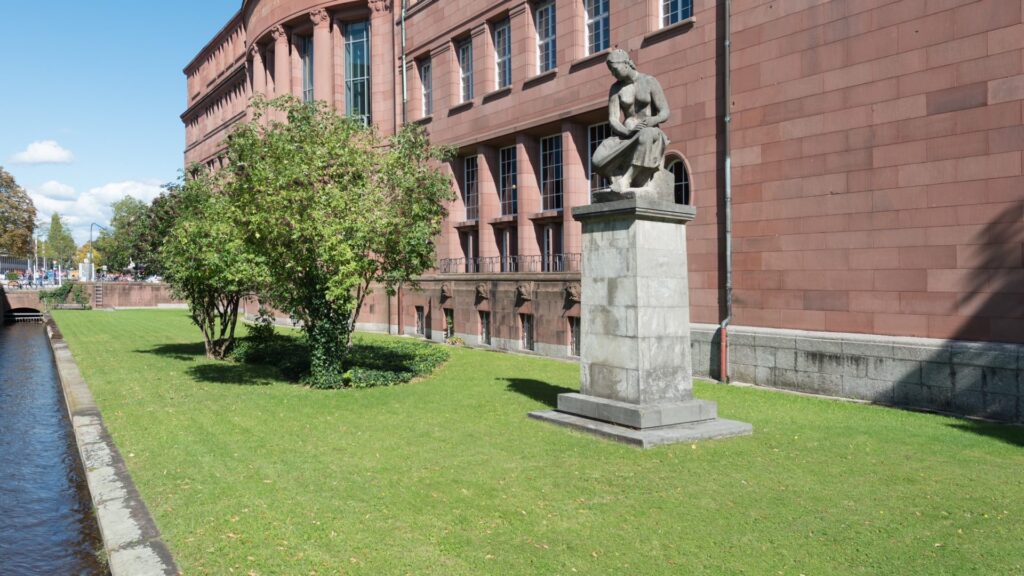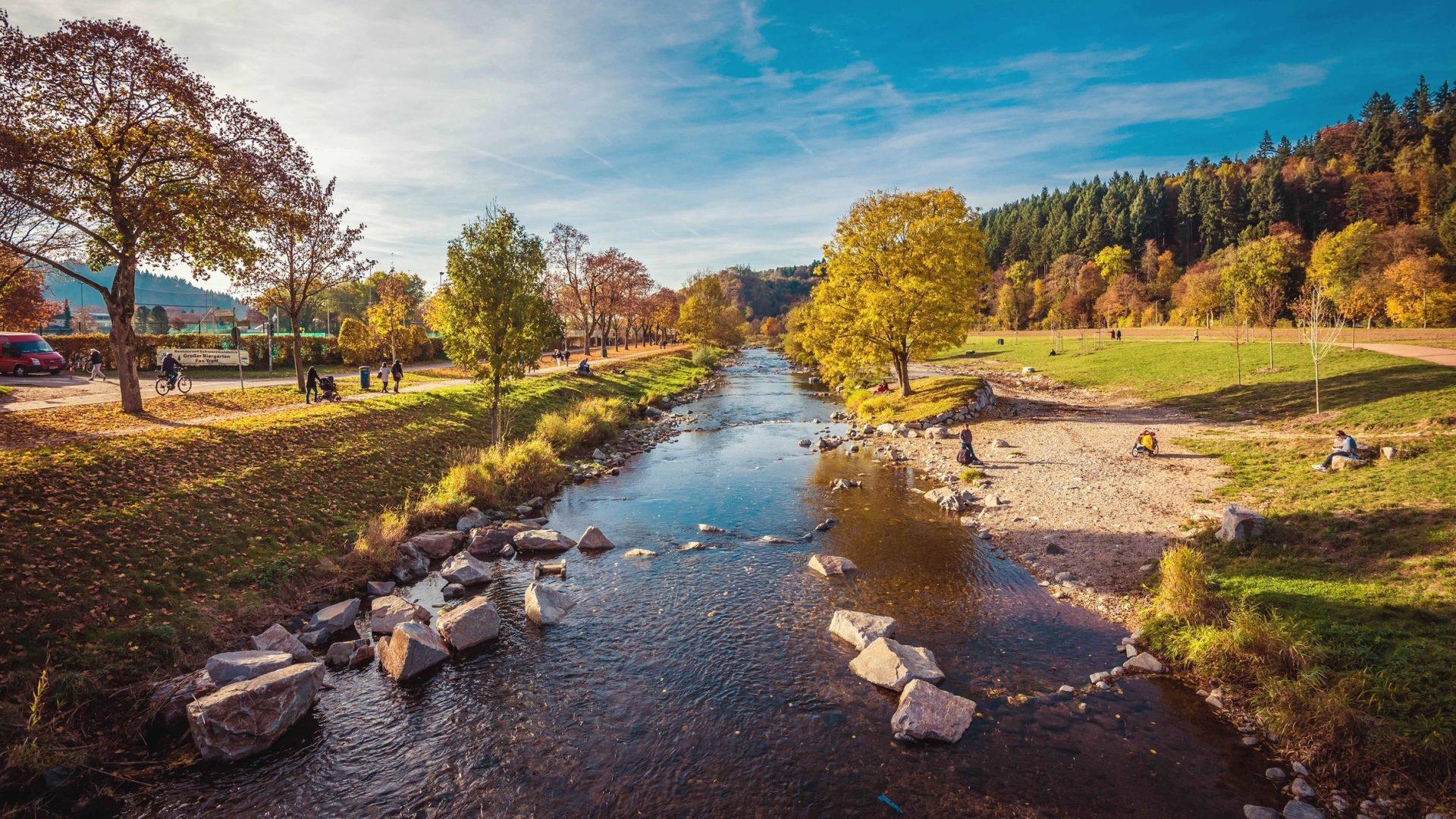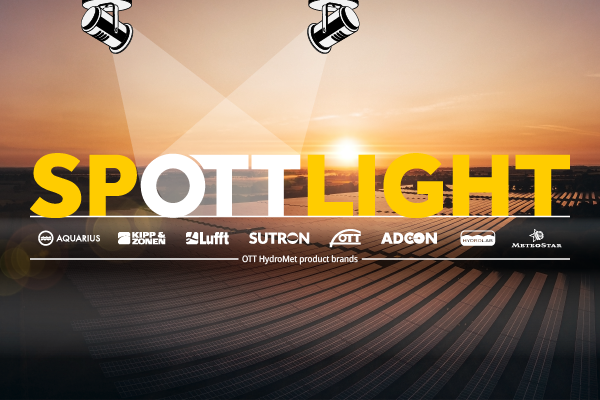The University of Freiburg is one of the top universities in Germany and has been recognized for excellence in research and education for the last 565 years. In fact, 23 Nobel Prize laureates have researched, taught, and studied at the university. Markus Weiler is a Professor of Hydrology & Chair of Hydrology in the Faculty of Environment and Natural Resources and explains why the faculty has such a good reputation when it comes to research.
“We are somewhat unique in that we typically have one professor that oversees a small department with 5 to 20 Ph.D. students and other scientists, so we have the capacity to run many different research projects. Germany also has very good external funding available for university research. The hydrology department currently has five different experimental catchments, one in the Black Forest, another in a rural setting, also an urban setting, and two in agricultural watersheds. At any given time, we have 10-15 different projects underway.” said Weiler.
These research projects amount to large volumes of data that need to be stored and managed by multiple people for long periods of time. Having this data accessible in one central place is important so that researchers can organize and analyze the data. In 2003, Weiler was working at the University of British Columbia on the West Coast of Canada, where he first became familiar with Aquarius, a data management software tool, developed by Aquatic Informatics.
“I can appreciate the thought that went into structuring the data in Aquarius. Instead of focussing on the sensor, Aquarius starts with the location, because you need much more than a measurement, coordinates and a time stamp, to know the quality of the data. You also need to include metadata, such as whether the reading is manual or digital, plus the frequency of measurement. This helps to determine if you have drift or if the sensor is broken. Sensor drift can lead to inaccurate measurement readings. It can be caused by several factors such as environmental contamination, vibration, or extreme temperature fluctuations. Using software like Aquarius gives us quality assured data, which sets the baseline for good analysis,” said Weiler.

Customizing software to address the scope of a project
In 2012, the Chair of Hydrology got a large grant from the German research foundation, Deutsche Forschungsgemeinschaft (DFG) to install 10,000 individual sensors in different watersheds in Luxembourg to measure discharge, soil moisture, meteorological variables, water quality, groundwater, and isotopes. Aquarius was used to manage the large amount of data from this continual monitoring and required some custom modifications to manage the large scope of the project.
“At the time Aquarius was designed mostly for water gauging, discharge, and quality data and so we worked with the software developers to add some new measurement parameters for soil water content, stable isotopes, and meteorological variables. They also worked with us to create new features that allow us to manage the data in the way we want to apply it. For example, we had multiple stations with clusters of sensors, and we wanted to duplicate the meta information for all stations rather than set up each station individually. Being able to work with the Aquarius team to make these kinds of enhancements was beneficial to both of us.”
Another unique aspect of the chair of hydrology is that is part of the Faculty of Environment and Natural Resources, this gives Weiler access to a range of expertise. Projects include input and use of data from economists, political scientists, engineers, and so on. This interdisciplinary approach allows research projects to incorporate many different skill sets and perspectives that make the outcomes more meaningful to society.
Understanding hydrology to better predict the impacts of climate change
Today, the chair of hydrology is working on a large project linking carbon and water fluxes in forests between trees, soil, and the atmosphere. There are thousands of measurements being taken within one hectare of different forest stands and Weiler is using Aquarius to manage, qualify and analyze much of this data. This is a complex project with 4-dimensional measurement, that includes sensor and sample data that is currently collected by students but will soon be robots designed by the engineering department, as well as drones to measure conditions in the canopy, magnetic resonance imaging (MRI), and nuclear magnetic resonance (NMR) that allows for analysis of water and phloem sap flows throughout the tree system. The continuous NMR is a new methodology that can quantify the transport of water and carbon (isotopes) in trees and is something Weiler hopes to work with Aquarius developers to incorporate into the software.
By improving the understanding of carbon and water cycles in forests, scientists will be able to better predict the effects of extreme heat, drought, and flooding that are increasingly endangering many forests around the world. “As forests process much of the planet’s carbon, their survival is our survival, so it’s imperative that we understand how it functions on different scales so that we can better predict the health of forests in 10, 20, 50 or 100 years plus, as we face the effects of climate change,” said Weiler.
Another research project that requires, processing and storage of continual monitoring is the study of hydrological connectivity and its controls on hillslope and catchment streamflow generation. The university has 46 sensor cluster sites and over 20 streamflow gauging sites within a nested catchment arrangement. Measurements include soil moisture and temperature, water level and temperature in ground and surface water, sap flow, rainfall, air temperature, humidity, wind speed and direction, and global radiation. These measurements amount to a total of 2,664 times series at five-minute intervals. There are also 60 time-lapse cameras and sample observations that can be written up in Aquarius notes for individual sites.
Using Aquarius, researchers can arrange and analyze data and find relationships between such things as soil moisture and groundwater level, stream discharge and isotopes to better understand how much water catchments store, how catchments release water in space and time, and how the hydrological functions of water collection, storage, and release inter-connect.
By furthering the understanding of connectivity with a catchment, scientists are able to better predict rainfall-runoff response and how it affects water quality in streams as well as impacts on riparian ecosystems. With extreme rainfall events becoming more common, this research will help to understand the interaction between surface and groundwater, but also the connectivity of pollutants into the environment.
The benefit of off-the-shelf data management solutions
Prior to using Aquarius, research data would reside in disparate places and over time the data sets would often lose their value because the information that defined the data or time series would be missing as the person moved on. The university found that years and years of valuable information was lost when data was stored in various project file formats and in different locations.
“Like most universities, we have a lot of data scientists and of course, they tend to like to build their own systems and think it’s more affordable. But we have seen over time that to get the most value out of data, takes skilled structuring, and in our case from hydrological experts. Software continues to evolve over time as do our methodologies, research needs, and project parameters. Designing a new data management system from the ground up to accommodate these changes, doesn’t make sense. This is why we prefer to use a professional program that is maintained by developers who focus solely on streamlining data management for better analysis” said Weiler.
Today Aquarius is used by monitoring agencies around the world to acquire, process, model, and publish data, and it continues to expand features and offerings based on valuable insight and needs from clients like Markus Weiler.
Author: Intan Distler is Technical Sales Engineer, Europe for Aquatic Informatics, she specializes in environmental monitoring networks and leverages her expertise to define solutions that help unify disparate data sources to unlock decision-making potential.
This article was initially published in Water Magazine



